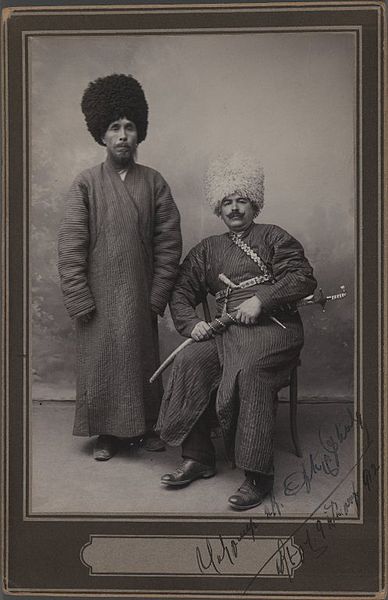Krum, often referred to as Krum the Fearsome was the Khan of Bulgaria from sometime between 796 and 803 until his death in 814. During his reign the Bulgarian territory doubled in size, spreading from the middle Danube to the Dnieper and from Odrin to the Tatra Mountains. His able and energetic rule brought law and order to Bulgaria and developed the rudiments of state organization.
A 14th-century depiction of Krum
Krum feasts with his nobles as a servant (right) brings the skull of Nikephoros I, fashioned into a drinking cup, full of wine.
Krum is being pursued by the army of Leo V. Miniature from the 12th century Manasses Chronicle.
Khan is a historic Mongolic and Turkic title originating among nomadic tribes in the Central and Eastern Eurasian Steppe to refer to king. It first appears among the Rouran and then the Göktürks as a variant of khagan and implied a subordinate ruler. In the Seljuk Empire, it was the highest noble title, ranking above malik (king) and emir (prince). In the Mongol Empire it signified the ruler of a horde (ulus), while the ruler of all the Mongols was the khagan or great khan. The title subsequently declined in importance. During the Safavid and qajar dynasty it was the title of an army general high noble rank who ruling a province, and in Mughal India it was a high noble rank restricted to courtiers. After the downfall of the Mughals it was used promiscuously and became a surname. Khan and its female forms occur in many personal names, generally without any nobiliary of political relevance, although it remains a common part of noble names as well.

Eurasia on the eve of the Mongol invasions, c. 1200 AD
Mongol Empire's largest extent outlined in red; the Timurid Empire is shaded.
Two Khans in Turkoman Tribal Costume, One of 274 Vintage Photographs. Brooklyn Museum.






